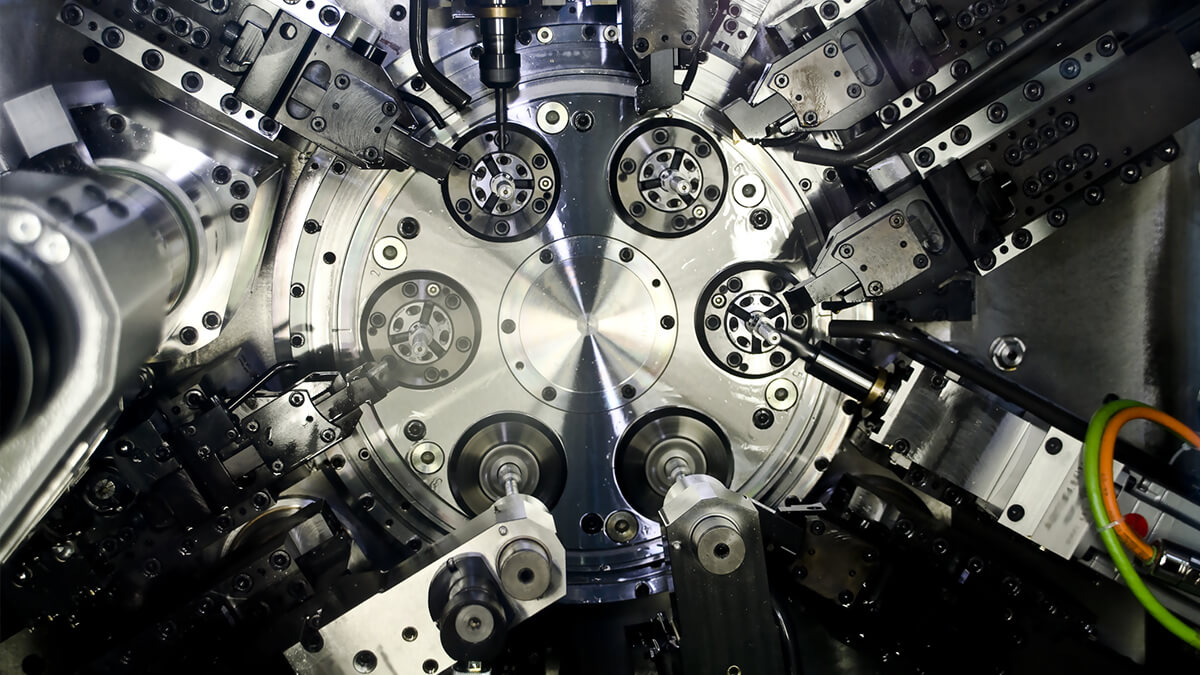- Showing results for
- Industrial Digitalization
Blockchain (or block chain) is a concatenated text record that connects and protects content by cryptography. Each block contains the encrypted hash of the previous block, the corresponding timestamp, and transaction data. This design makes the content of the block difficult to tamper with characteristic.
2020-05-15 17:56:47
With the implementation of the import substitution policy in Russia, the output of machine tools has increased, and the replacement of equipment has become one of the priority projects of Russia's "development strategy for the machine tool industry before 2030", which will inject huge business opportunities for the Russian machine tool industry.
2020-06-01 09:45:04
One of the main tenets of Industry 4.0 is data collection. Machine tools will have sensors that will collect many different kinds of data, including data on how much the machine has operated, the conditions it has operated in, and the condition of the components of the tool.
2020-06-05 13:42:46
Today we are going to learn more about "under one roof" in manufacturing. All disciplines are under one roof, which brings several advantages.
2020-10-28 13:54:54
As industry 4.0 technology continues to advance, existing data can be harnessed to develop machine-learning solutions that deliver real value, optimize decision making, increase flexibility, and attract top talent.
2020-10-30 10:44:26
The printing industry is very complex. It not only has many internal sub-industries but also involves many upstream and downstream related industries. It can be said that it is a huge industry system. The printing industry has a long history of development. Starting from the invention of printing in ancient China, printing technology has continued to innovate, forming a large industry, which we are almost engaged every day. Digital printing, 3D printing, other new emerging printing technologies will overturn and play new roles in printing industry markets.
2021-06-18 13:05:55
New technologies bring forth the new. AI and the cloud are irreversible trends that are strengthening the competitiveness of enterprises. Enterprises should consider how to implement AI and the cloud in each application of the enterprises.
2021-12-02 13:36:28
The science and technology industry is a rapidly changing market. The ability to continue research and development, innovation, and provide value will determine the future of the tech market. Let's understand the trend of the science and technology industry.
2022-01-03 13:23:19
The Metaverse is a new third wave of industry trends that will become more and more important over the next 10 to 20 years. At the singularity moment of the metaverse, the point in time at which technological growth becomes uncontrollable and irreversible, digital assets will be more valuable than physical assets.
2022-01-13 16:57:01
Amazon Web Services, Microsoft Azure, and Google Cloud account for 80% of the global cloud market. Which one is right for your operations?
2022-03-07 13:20:59
Edge computing will grow in importance as manufacturers see the development of the Industrial Internet of Things (IIoT). The interconnected factory, designed for manufacturing automation, will become an essential corporate goal.
2022-03-17 17:09:37
AIOps uses artificial intelligence to simplify IT job management and accelerate and automate problem resolution in complex, modern IT environments.
2022-03-23 10:26:48
With increasingly complex IT architecture exacerbating maintenance and operation challenges, the demand for IT agility is driving the growth of the AIOps market.
2022-03-23 13:49:05
DevOps is an evolving philosophy and architecture designed to encourage faster and better application development and faster release of new or revised software features or products to customers.
2022-03-23 16:45:11
The low-code development environment allows users with less technical knowledge to build entire business applications on their own without the assistance of IT staff.
2022-03-24 13:13:58
Smart manufacturing utilizes advanced manufacturing technology and provides solutions through AI, the Internet of Things, big data, cloud, edge computing, and other technologies to substitute the production process with an intelligent manufacturing model and customize products according to customer needs.
2022-04-12 13:09:50
Germany is the second-largest producer of machine tools in the world, after China. Advanced German machine tool technology has led the development of the machine tool market.
2022-05-16 16:41:57
The Metaverse is bringing virtual gamers to a wireless sci-fi vision with an infinite number of virtual worlds. However, you will find some transformation and benefits in how manufacturers can be more productive in the digital and physical worlds.
2022-05-24 10:13:22
The vision of the Internet of Things is to make everyone's life better, safer, and more convenient. To achieve this goal, we must first increase the speed of data processing, generate real-time intelligence, and allow IoT data to make informed decisions in seconds.
2022-07-26 10:03:21
Digital Image Processing is a method and technology for removing noise, enhancing, restoring, segmenting, and extracting features through a computer.
2022-09-23 13:07:56
Agree




















